Pentheus
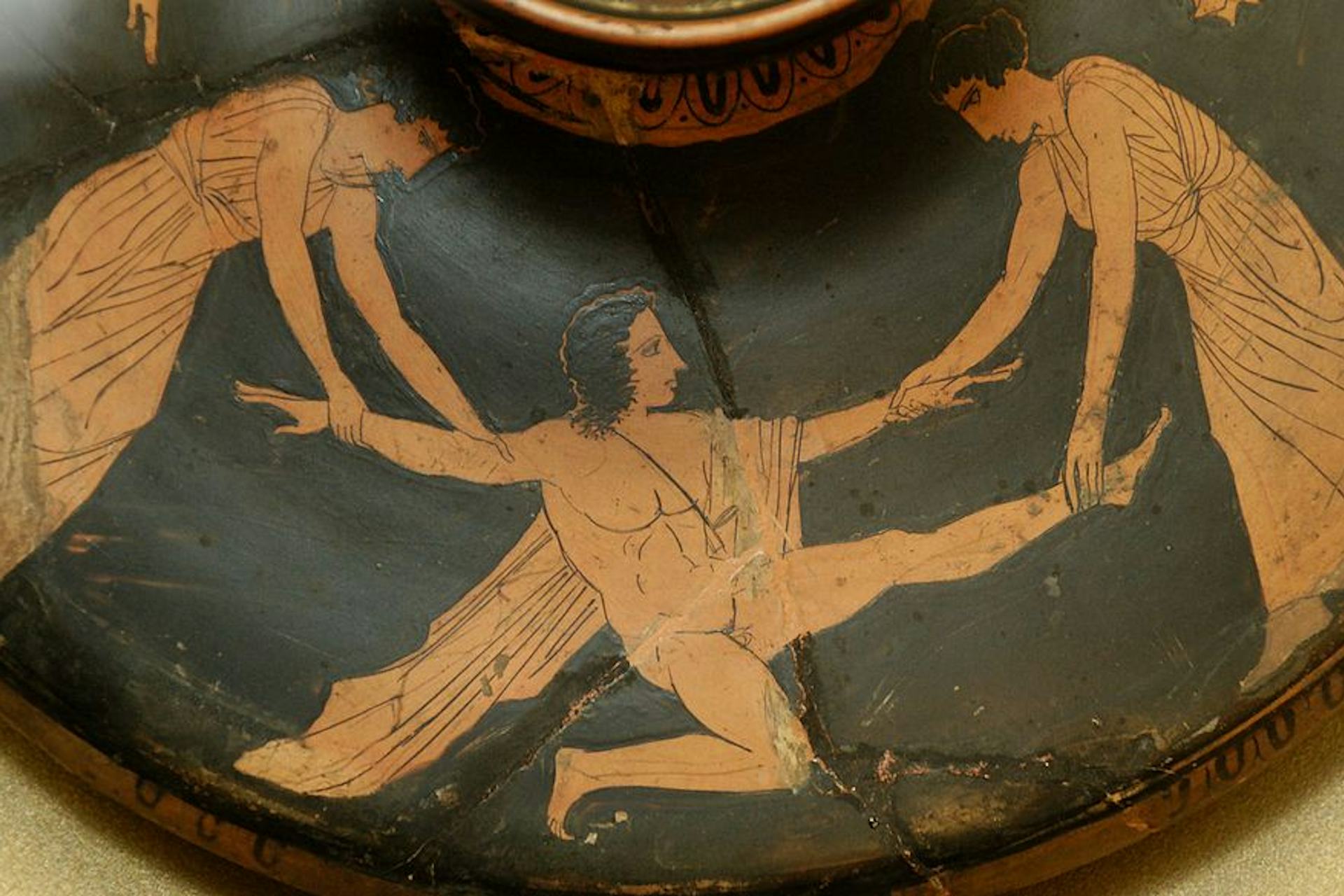
Attic red-figure lekanis lid showing the death of Pentheus (ca. 450–425 BCE)
Louvre, Paris / JastrowPublic DomainOverview
Pentheus—son of Echion and Agave, and grandson of the hero Cadmus—was a king of Thebes who refused to acknowledge the divinity and cult of Dionysus. To punish him for this impiety, Dionysus had him killed by his own mother.
In Euripides’ Bacchae, the most familiar retelling of the Pentheus myth, Dionysus convinces Pentheus to spy on the maenads, frenzied female worshippers of the god (whom Pentheus’ mother and aunts have joined). But the maenads spot him and, driven into a mad furor by Dionysus, tear him limb from limb.
Who were Pentheus’ parents?
Pentheus’ mother was Agave, daughter of Cadmus, the founding hero of Thebes. His father was Echion, who was one of the spartoi—a race of men who emerged from the earth when Cadmus first established the kingdom of Thebes.
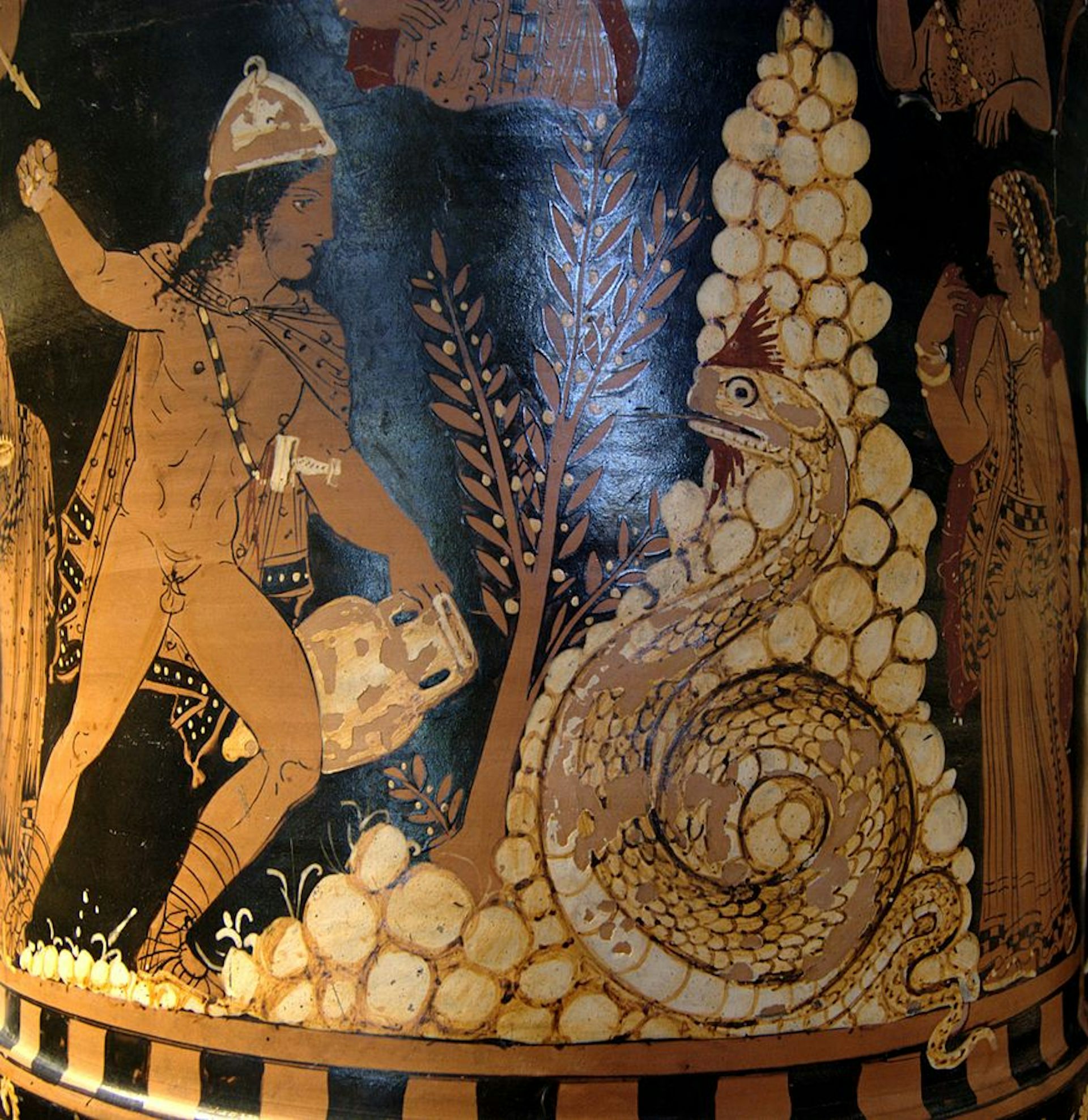
Red-figure calyx-krater showing Cadmus fighting the dragon found in Sant'Agata de' Goti (ca. 350–340 BCE)
Louvre Museum / Bibi Saint-PolPublic DomainWhy did Pentheus oppose Dionysus?
Pentheus was one of several mythical figures who opposed the cult of Dionysus. Despite being Dionysus’ cousin, Pentheus did not believe he was truly a god—perhaps because Dionysus’ mother was a mortal. In Euripides’ Bacchae, Pentheus sees Dionysus as a dangerous influence on the women of Thebes and thus outlaws his worship.
By the end of the Bacchae, Dionysus has proven his divinity, but it is too late for Pentheus to repent: he is destroyed by Dionysus’ followers.
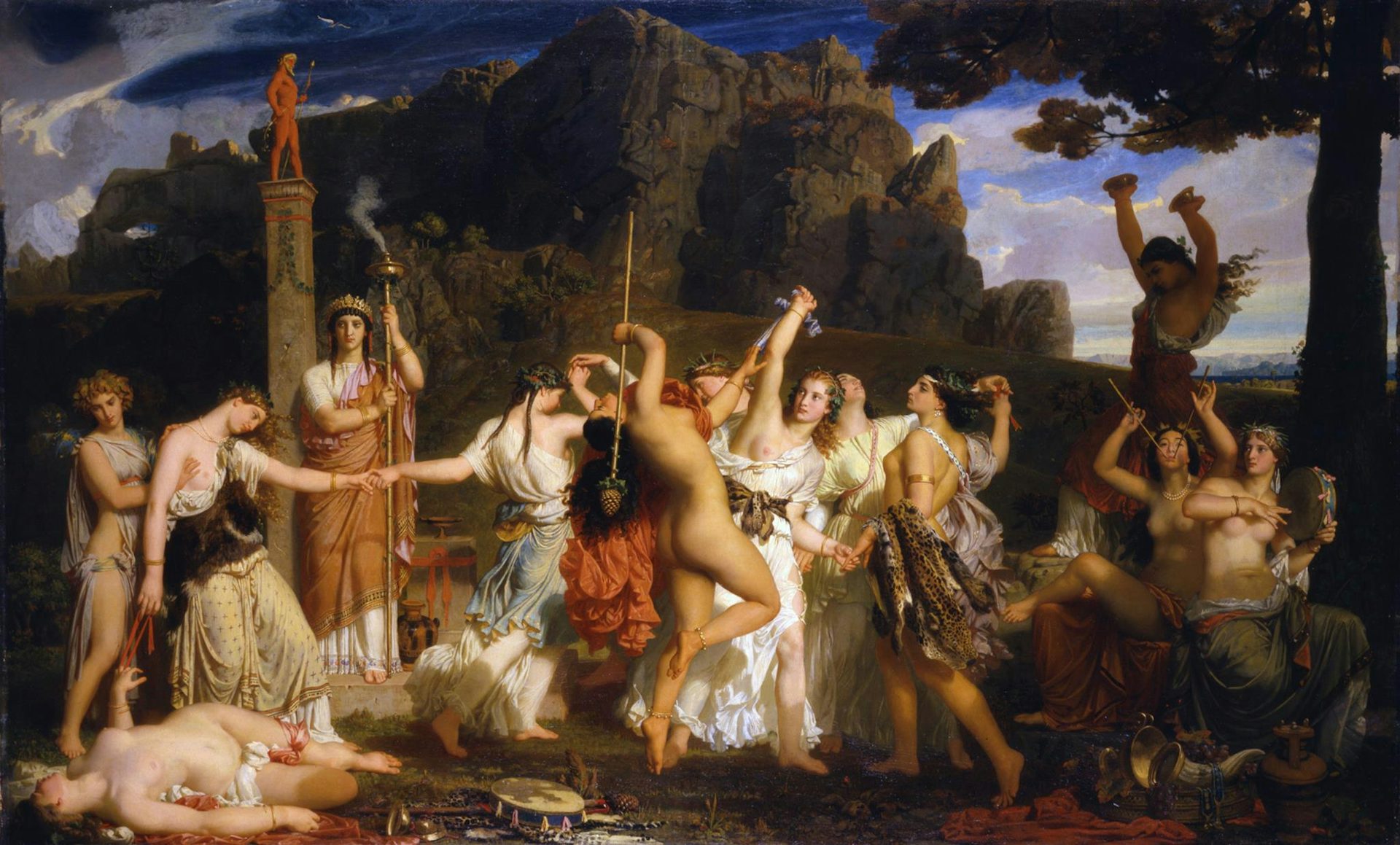
The Dance of the Bacchantes by Marc-Charles-Gabriel Gleyre (1849)
Cantonal Museum of Fine Arts, LausannePublic DomainThe Death of Pentheus
When Dionysus, the son of Zeus and the Theban princess Semele, came to Thebes to introduce his cult, he was given a rude welcome. His aunts (the sisters of his mother Semele) refused to acknowledge him as a god, while the Theban king Pentheus outlawed his worship.
Dionysus responded by driving his aunts and the other women of Thebes into a religious frenzy that took them out of their homes and into the mountains. He then came to Pentheus in disguise and convinced him to spy on these mad worshippers.
But Pentheus was caught by the women, who in their frenzied state mistook him for a wild animal and tore him apart. It was Agave, Pentheus’ own mother, who led the group in the killing. Only later did Agave realize what she had done—but by then Dionysus had already had his revenge.
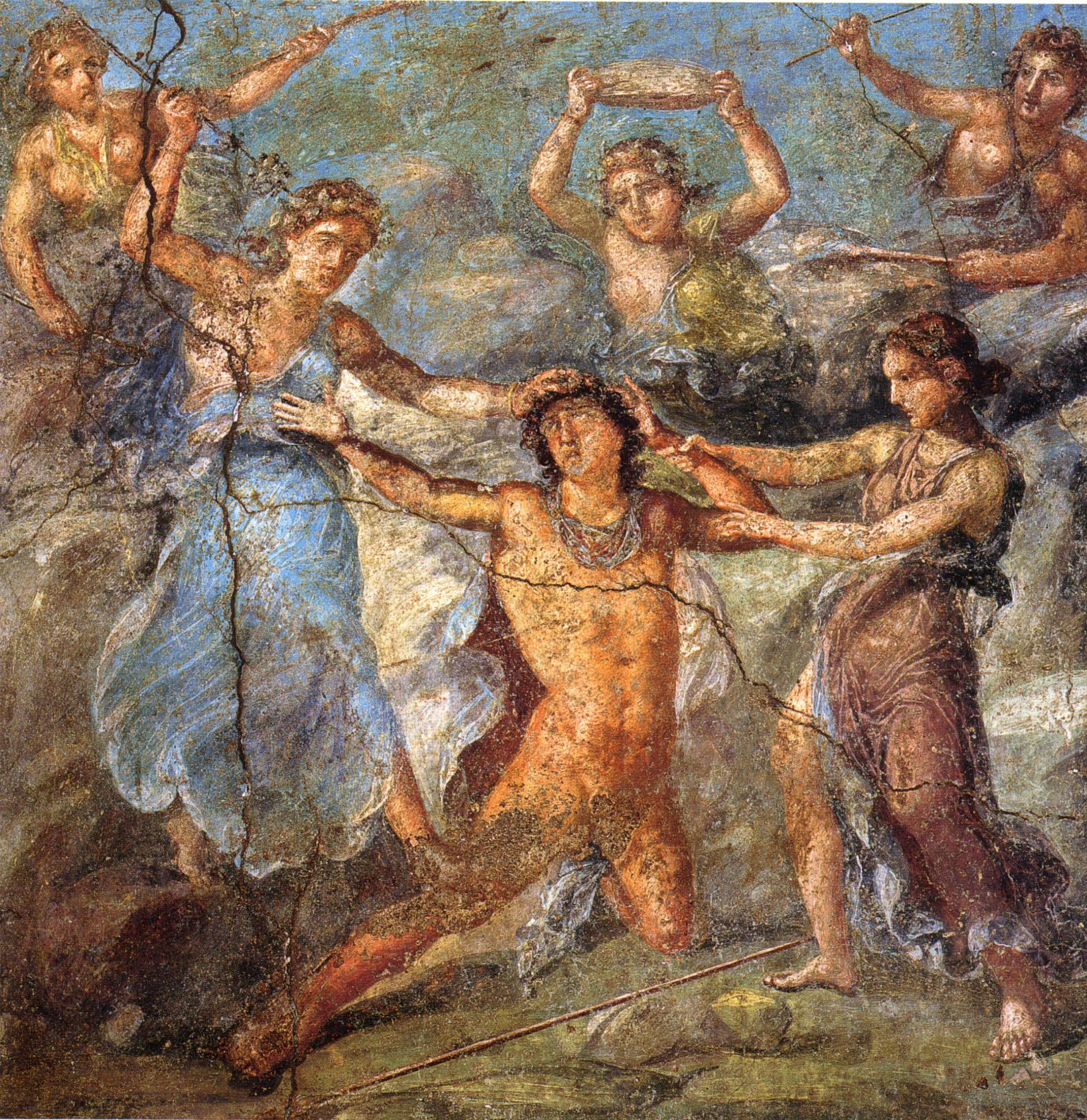
Fresco showing Pentheus being torn apart by maenads, one of whom is his mother Agave (first century CE)
Casa dei Vettii in Pompeii, ItalyPublic DomainAttributes
Pentheus was a king of Thebes, best known for his opposition to the cult of Dionysus. There seem to have been two versions of how Pentheus came to power. In the more familiar version, Cadmus (Pentheus’ grandfather) made Pentheus king of Thebes because he had no son.[1] But in another version, Cadmus did have a son, Polydorus, whom Pentheus banished so that he could usurp the throne.[2]
As a king, Pentheus was usually described as tyrannical, an “unjust man who did unjust things.”[3] He was also typically represented as either too young[4] or too reckless[5] for the office.
Pentheus’ defining characteristic was his blasphemous attitude toward the god Dionysus. He was sometimes even described as an atheist who “[fought] against the gods.”[6]
For failing to recognize a major god, Pentheus was often seen as a madman.[7] But in another sense, he was also a thoroughgoing rationalist who represented order in the face of the ecstatic madness of Dionysus.[8]
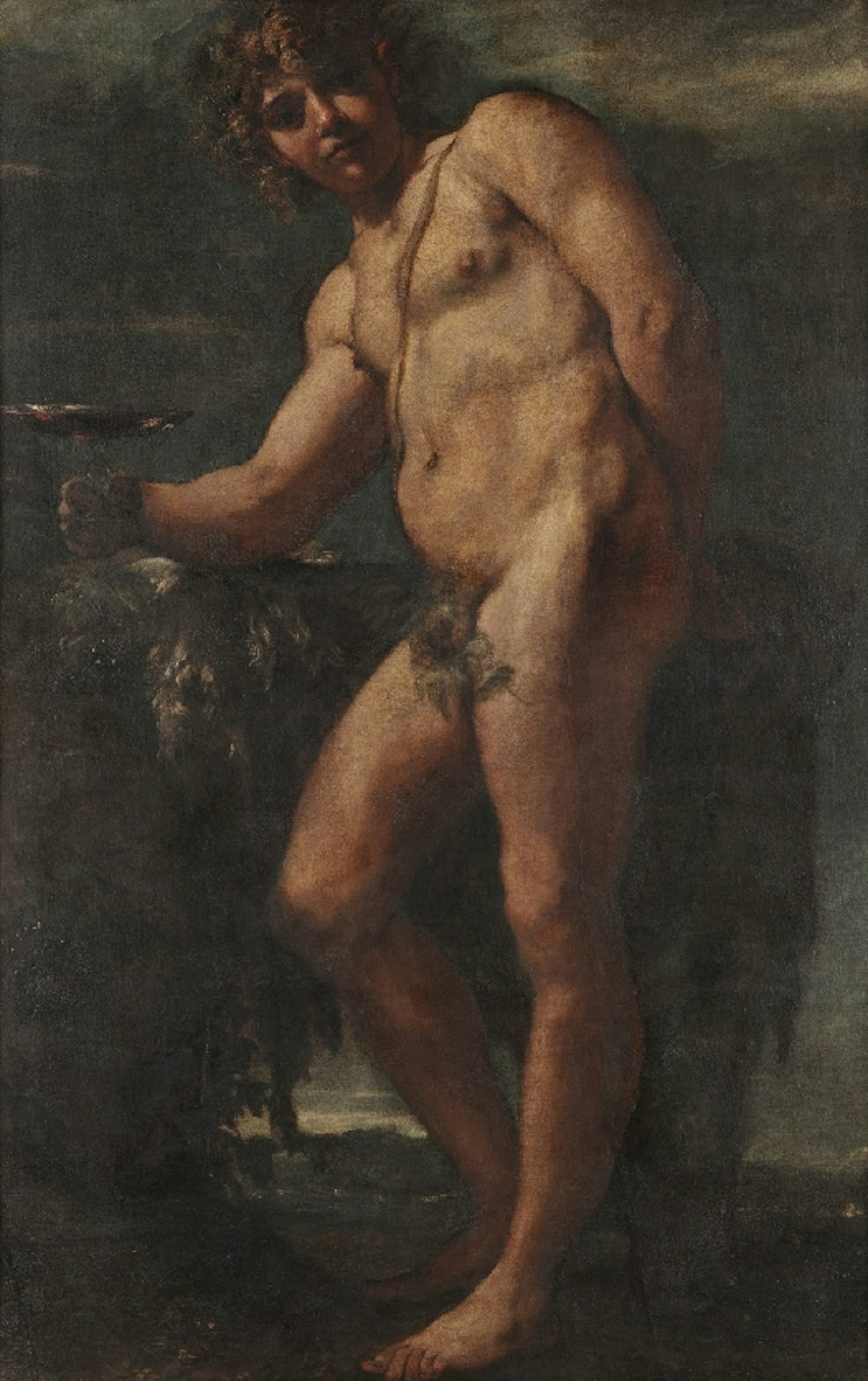
Bacchus by Annibale Carracci (1590–1591)
National Museum of Capodimonte, NaplesPublic DomainIconography
Pentheus first appeared in ancient art around the late sixth century BCE. In these early depictions (usually on vase paintings), he was characteristically represented as mature and bearded, almost always on the verge of being torn apart by the maenads or Bacchae.
By the fourth century BCE, Pentheus’ iconography had shifted somewhat: it became standard to represent the impious king as youthful and beardless, clad in a short cloak (chlamys) and wearing a felt cap (pilos). His image also spread to other geographic locations, featuring in ancient art as far away as Campania and Etruria in Italy.
Across historical periods, artists usually depicted Pentheus fighting against or being killed by the maenad or bacchant worshippers of Dionysus.
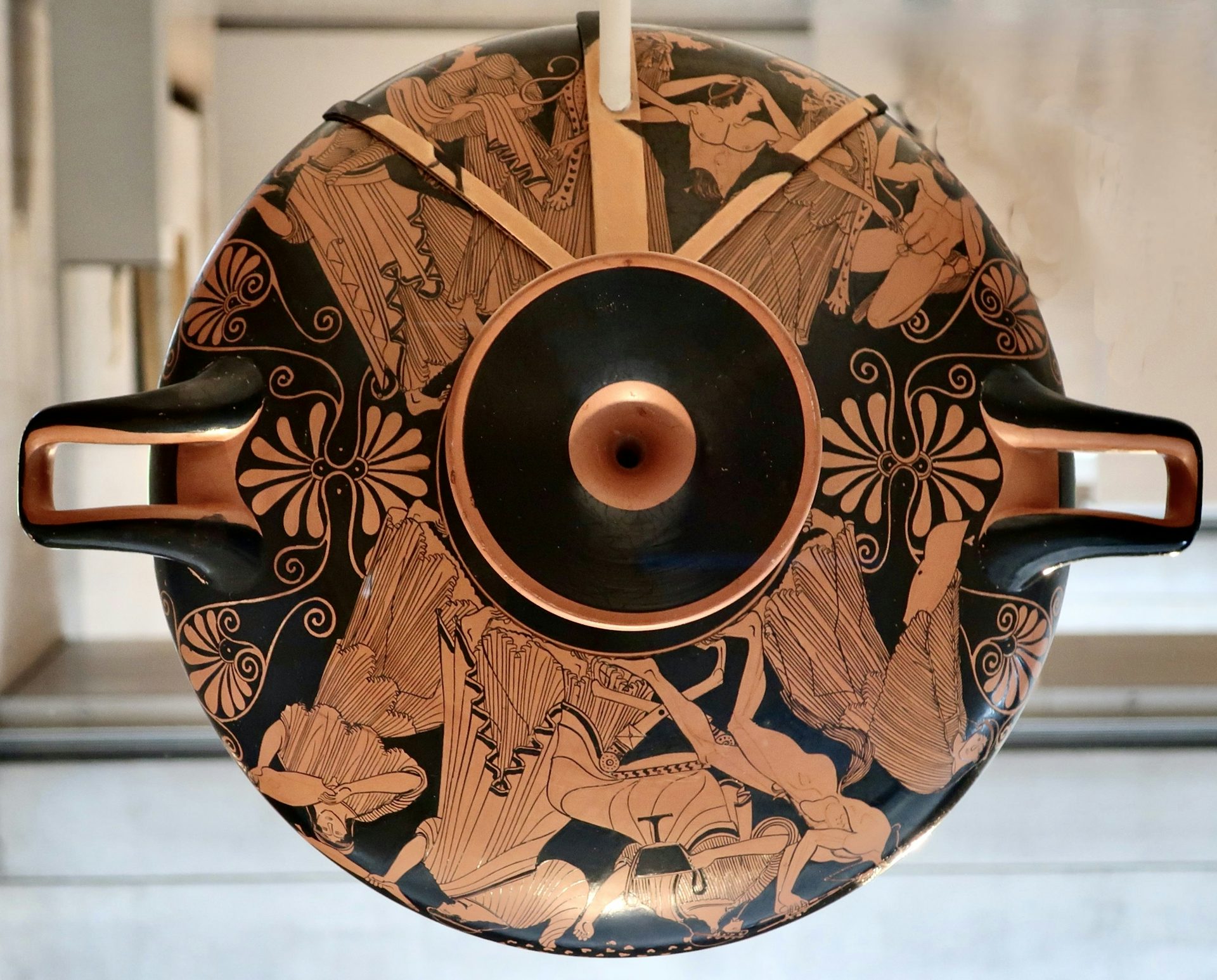
Attic red-figure cup by Douris showing the death of Pentheus (ca. 480 BCE)
Kimbell Art Museum, Fort Worth / WmpearlCC0Some early art showed Pentheus being torn apart specifically by a maenad named Galene (identified by inscription), thus implying a version of the myth in which Pentheus was not killed by his mother and aunts (Galene is never mentioned as one of Cadmus’ daughters).
In other artistic examples, Pentheus wields a sword and spear, implying yet another version of the myth in which he fought openly against the maenads rather than spying on them.[9]
Etymology
The name Pentheus (Greek Πενθεύς, translit. Pentheús) is most likely derived from the Greek verb páschō, meaning “to experience, suffer,” a word that is itself thought to be connected to the Indo-European *bʰendʰ-, “to bind.” Pentheus can thus be translated (rather appropriately) as “he who suffers.”[10]
Pronunciation
English
Greek
Pentheus Πενθεύς (Pentheús) Phonetic
IPA
[PEN-thi-uhs] /ˈpɛnθɪəs/
Other Names
Hecataeus, the earliest author known to have mentioned the figure of Pentheus, used the name “Tentheus” (Greek Τενθεύς, translit. Tentheús) rather than Pentheus.[11]
Family
Ancient sources agree that Pentheus was the son of Agave, daughter of the Theban hero Cadmus, and of Agave’s husband Echion, one of the spartoi or “sown men” who emerged from the earth when Thebes was founded.[12] Pentheus was thus the grandson of Cadmus and Harmonia, the first rulers of Thebes, as well as the cousin of the god Dionysus, who was born from the union of Pentheus’ aunt Semele and Zeus.
According to Parthenius, Pentheus had a sister named Epirus.[13] The surviving literature does not name Pentheus’ wife, but there was evidently a tradition in which he had a son named Oclasus. This Oclasus was the father of Menoeceus, who went on to father Creon and Jocasta (best known from the Oedipus myth).[14]

Oedipus Separating from Jocasta by Alexandre Cabanel (1843)
Wikimedia CommonsPublic DomainMythology
Origins
There is a strong parallel between the myth of Pentheus and that of Lycurgus, a Thracian king who, like Pentheus, opposed the cult of Dionysus.[15] Both men were punished for denying Dionysus and for suppressing his cult, and in both cases the punishment resulted in some form of madness. As a result, modern scholars have interpreted these myths as an expression of the tension between divine madness and human order.[16]
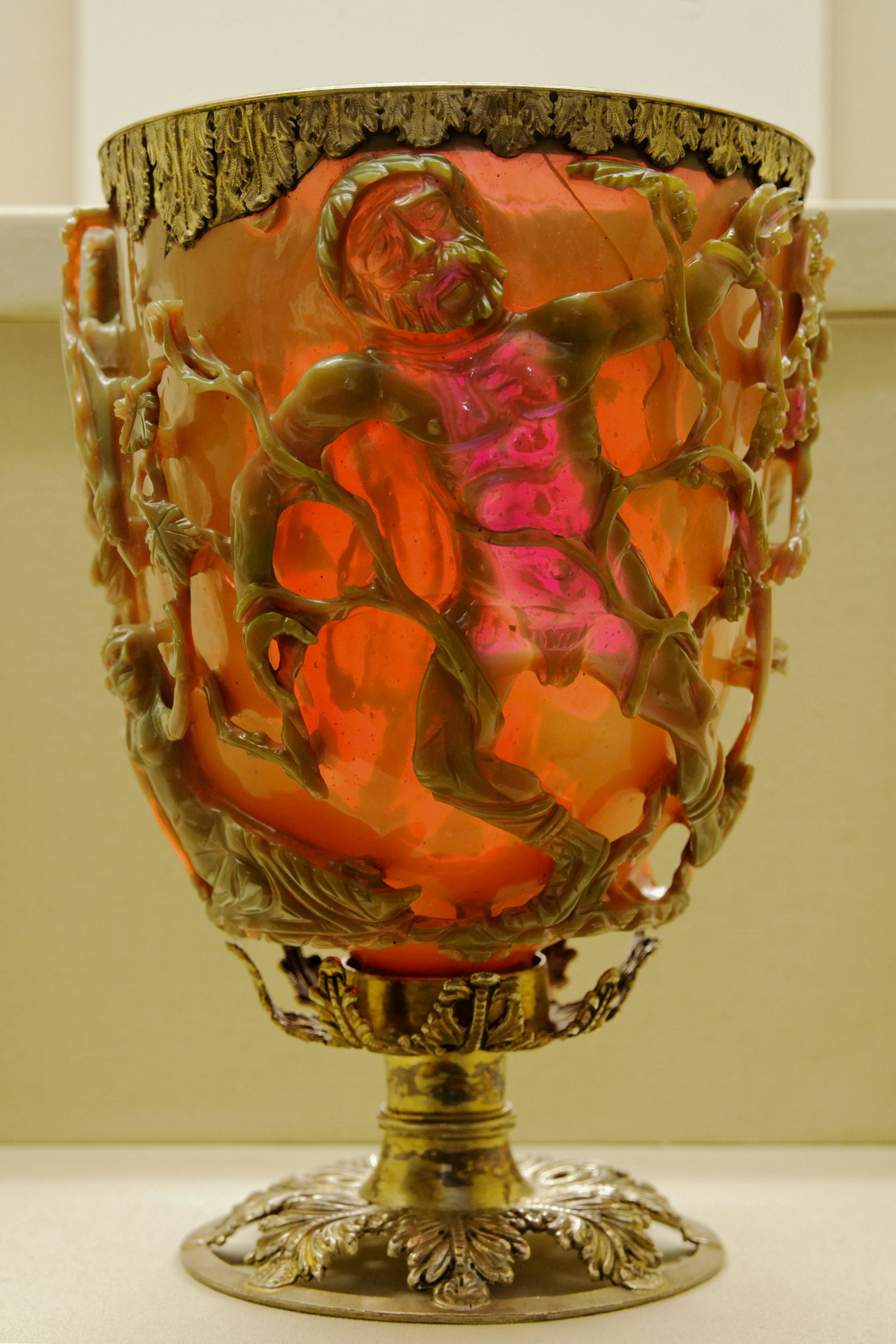
The "Lycurgus Cup," showing the madness and death of Lycurgus (4th century CE)
British Museum, London / Marie-Lan NguyenCC BY 2.5Pentheus and Dionysus
The best-known literary account of the myth of Pentheus is Euripides’ Bacchae. According to this tragedy, Dionysus came to Thebes, the home of his mother Semele, to teach his rites to the Theban people. But his divinity was crudely dismissed by his mother’s sisters and by the reigning king, Pentheus.
To teach the people of Thebes a lesson, Dionysus goaded his aunts and the other women of the city into a wild, ecstatic frenzy. In this state, the women went to the mountains to celebrate the new god. This concerned Pentheus, who resolved to suppress the worship of Dionysus in Thebes.
For daring to oppose him, Dionysus devised a terrible punishment for Pentheus. According to Euripides’ play, the god came to Pentheus disguised as a devotee of Dionysus from Lydia. Pentheus, not recognizing the disguised Dionysus but still holding him responsible for the madness that had seized the women of his city, ordered him to be bound and imprisoned.
But Dionysus easily escaped Pentheus’ prison through a series of illusions: he caused Pentheus to bind a bull instead of himself, after which he made it seem like Pentheus’ palace was on fire. He even fashioned a phantom image of himself for Pentheus to pursue.
At last, Dionysus confronted Pentheus and convinced him to disguise himself as a woman in order to spy on the women’s rites in the mountains. Dionysus even helped Pentheus don this disguise and led him to the mountains himself. But the women quickly detected Pentheus and attacked him, mistaking him for a wild animal. With Pentheus’ own mother, Agave, leading the charge, the frenzied women tore Pentheus limb from limb.
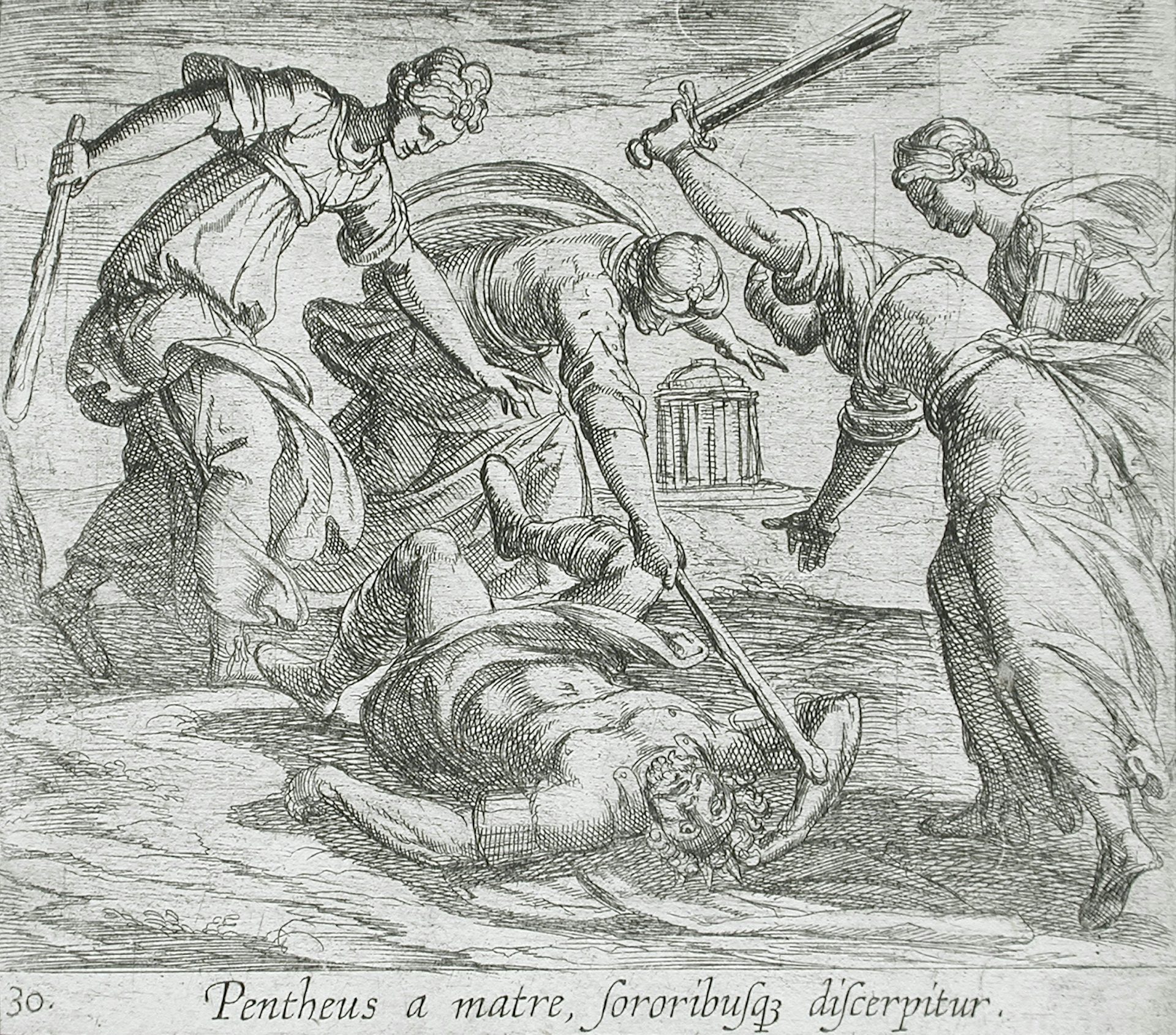
The Death of Pentheus by Antonio Tempesta and Wilhelm Janson (1606)
Los Angeles County Museum of ArtPublic DomainPropping Pentheus’ head on her thyrsus (a kind of wand used in Dionysian rites), Agave returned to Thebes, boasting that she was bringing the head of a lion she had slain. Cadmus, however, understood what had happened and gently helped his daughter see her “prize” for what it really was—the head of her own son.
As Agave began to recover her sanity, Dionysus presented himself to the people of Thebes and explained that he had punished the royal family for failing to recognize his divinity. He then meted out further punishments, turning Cadmus and his wife Harmonia into snakes and commanding them to wander through Greece at the head of a barbarian army.[17]
The myth of Pentheus was relatively consistent across most ancient texts, though some minor variations did exist. In some accounts, Pentheus conceived of the plan to spy on the maenads or Bacchae on his own, without Dionysus’ intervention.[18] The animal for which Agave mistook Pentheus also varied: sometimes it was a lion, as in Euripides, but other authors had Agave see Pentheus as a boar,[19] a bull,[20] or a fawn.[21]
In one tradition, Pentheus’ transformation was not merely an illusion. Rather, the daughters of Cadmus asked Dionysus to turn them into beasts of prey when Pentheus threatened them. Dionysus readily answered this prayer, turning the women into panthers and Pentheus into a bull. In these new forms, the daughters of Cadmus chased Pentheus down and tore him apart.[22]
In another story, reported by the first-century BCE poet Parthenius, Pentheus’ mangled body was collected by his sister Epirus, who promptly left Thebes. When she came to the land then known as Chaonia, she buried her brother’s remains in a grove (later, when Epirus died, the land of Chaonia was renamed after her).[23]
Worship
Pentheus was not directly worshipped in the ancient Greek world. He was, however, connected with the cult of Dionysus in Corinth. The geographer Pausanias described two wooden cult statues (xoana) in the Corinthian agora that represented Dionysus Lysios (“Loosener”) and Dionysus Bakcheios (“Raving”). He noted a legend that claimed these statues had been fashioned from the “tree of Pentheus,” which the Corinthians were once commanded to worship as a god.[24]